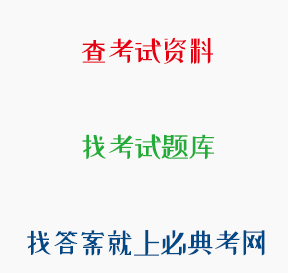正确答案: B
六艺
题目:我国奴隶社会的教育内容是( )。
解析:我国奴隶社会的主要教育内容是六艺,六艺包括礼、乐、射、御、书、数,其教育特征是培养为奴隶社会服务的人才。故选择B。A项,四书指《大学》、《中庸》、《论语》、《孟子》;五经指诗、书、礼、易、春秋。C项,自然科学是研究无机自然界和包括人的生物属性在内的有机自然界的各门科学的总称。自然科学是研究大自然中有机或无机的事物和现象的科学,包括天文学、物理学、化学、地球科学、生物学等和地理学。D项,生产技能是指完成工作所需具备的知识、技能、经验等:是岗位胜任者和卓越绩效者所需的实际操作技能。按照各个行业自身的标准,对就业者的具体工作能力要求和规范。
查看原题 查看所有试题
学习资料的答案和解析:
[单选题]《中华人民共和国教育法》最重要立法目的是( )。
为了发展教育事业,提高全民族的素质
解析:《中华人民共和国教育法》第一条规定:为了发展教育事业,提高全民族的素质,促进社会主义物质文明和精神文明建设,根据宪法,制定本法。故选择A。
[单选题]"关键期"的存在表明了个体身心发展具有( )的特征。
不平衡性
解析:个体身心发展的规律包括顺序性、阶段性、不平衡性、互补性、差异性。关键期是指个体发展过程中环境影响能起最大作用的时期。个体身心发展的不平衡性强调不同时期,人的发展速度不同,关键期是不平衡性的体现。故选择C。A项,个别差异性,强调不同学生间存在差异;教学启示:因材施教,有的放矢。B项,连续性,强调发展各个阶段相互衔接,阶段性与连续性现结合,量变与质变相结合。D项,顺序性,强调发展过程是由低级到高级,有顺序的发展过程;教学启示:要循序渐进,不能"拔苗助长"。
[单选题]教学的中心环节是( )。
上课
解析:上课是教学工作的中心环节,课堂是履行教师职责的中心舞台,也是体现教师价值的最佳场所。
[单选题]学习芭蕾舞时,小丽把连续动作分成小节拍,跟着舞蹈老师一步步做,这是操作技能形成的( )阶段。
模仿
解析:一般来说,操作技能的形成可以分为操作定向、操作模仿、操作整合与操作熟练四个阶段。操作定向也称作操作的认知阶段,即理解操作活动的结构和程序的要求,在头脑中建立起操作活动的定向映象的过程。操作模仿即学习者通过观察,实际再现特定的示范动作或行为模式。操作整合是把模仿阶段习得的动作依据其内在联系联结起来,固定下来,并使各动作成分相互结合,成为定型的、一体化的动作。操作熟练是操作技能掌握的高级阶段,这个阶段形成的动作方式对各种变化的条件具有高度的适应性,动作的执行达到高度的程序化、自动化和完善化。根据题干描述,小丽还处于操作技能的模仿阶段。故选C。
[单选题]学校教育中通常采用评三好生、优秀学生干部的方式或用学习反馈,以物质或精神奖励的方式引起学生的学习动机,这主要是激发学生的( )。
自我提高的内驱力
解析:自我提高的内驱力是一种通过自身努力,胜任一定的工作,取得一定的成就,从而赢得一定的社会地位的需要。评三好学生、优秀班干部等,正是为了激发学生的自我提高内驱力。
[单选题]What role does the teacher play at the feedback stage?
Assessor.
解析:本题考查教师角色。在教学反馈阶段,教师的角色是评价者,故本题选A。
[单选题]为了大面积提高教学质量,苏联教育家巴班斯基将系统论的方法引入教学改革,提出的教育理论是( )。
教学过程最优化理论
解析:苏联教育家巴班斯基在著作《教学过程最优化》中提出了教学过程最优化理论。巴班斯基认为,应该把教学看作一个系统,从系统的整体与部分之间、部分与部分之间和系统与环境之间的相互联系、相互作用之中考察教学,以便对教育问题进行最优化处理。巴班斯基将现代系统论的方法引入教学改革,是对教学论进一步科学化的新探索。最近发展区理论的提出者是维果斯基;建构主义教学理论的代表人物有皮亚杰、奥苏伯尔等;范例教学理论是由瓦根舍因提出的。
[多选题]简述美育对促进学生德智体全面发展的意义。
[单选题]21.请阅读Passage 1,完成第1~5小题。
Passage 1
In recent years,however,society has come to understand the limitations of schools that merelysort and rank students.We have discovered that students in the bottom one-third to one-half of therank order-plus all who drop out before being ranked-fail to develop the foundational reading,writing,and mathematical proficiencies needed to survive in,let alone contribute to,an increasingly technically complex and ethnically diverse culture.So today,in asking schools to leave no childbehind,society is asking that educators raise up the bottom of the rank-order distribution to aspecified level of competence.We call those expectations our“academic achievement standards”.Every state has them,and,as a matter of public policy,schools are to be held accountable formaking sure that all students meet them.
To be clear,the mission of sorting has not been eliminated from the schooling process.Forthe foreseeable future,students will still be ranked at the end of high school.However,society nowdictates that such a celebration of differences in amount learned must start at a certain minimumlevel of achievement for all.
The implications of this change in mission for the role of assessment are profound.Assessmentand grading procedures designed to permit only a few students to succeed (those at the top of therank-order distribution) must now be revised to permit the possibility that all students could succeedat some appropriate level.Furthermore,procedures that pennitted (perhaps even encouraged) somestudents to give up in hopelessness and to stop trying must now be replaced by others that promotehope and continuous effort.In short,the entire emotional environment surrounding the prospect ofbeing evaluated must change,especially for perennial low achievers.
The students' mission is no longer merely to beat other students in the achievement race,At least part of their goal must be to become competent.teachers must believe that all studentscan achieve a certain level of academic success,must bring all of their students to believe thISOf themselves,must “accommodate” the fact that students learn at different rates by making use of differentiated instruction,and must guide all students toward the attainment of standards.
The driving dynamic force for students cannot merely be competition for an artificialscarcity of success.Because all students can and must succeed in meeting standards,cooperationand collaboration must come into play.The driving forces must be confidence,optimism,andpersistence-for all,not just for some.All students must come to believe that they can succeedat learning if they try.They must have continuous access to evidence of what they believe to be credible academic success,however small.This new understanding has spawned increased interestin formative assessment in recent years.
Which is meant by the author about the emotional promise of assessment for students?
To build up their co血dence in success.
解析:推断题。根据题干中的关键词emotional promise将答案锁定在第三段和最后一段。根据第三段中的“Assessment and grading procedures...must now be revised to permit the possibility that all students could succeed at some appropriate level...must now be replaced by others that promote hope and continuous effort...”以及最后一段中的“The driving dynamic force for students cannot merely be competition for an artificial scarcity of success...The driving forces must be confidence,optimism,and persistence...”可推断出作者表达的意思是通过评估改革,教师要激发学生的自信与希望,使他们相信通过不断的努力,终会取得成功。故本题选B。

 川公网安备 51012202001360号
川公网安备 51012202001360号